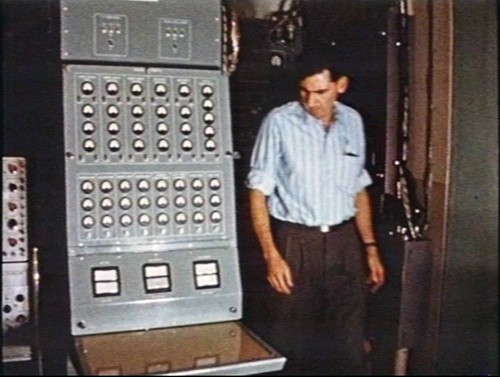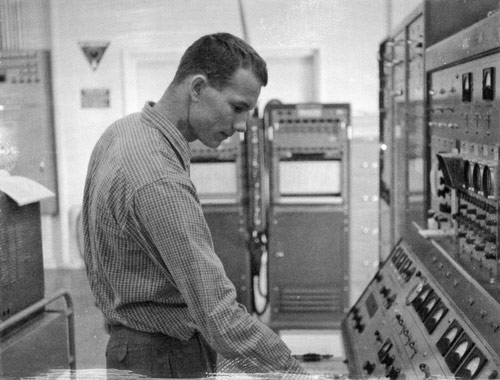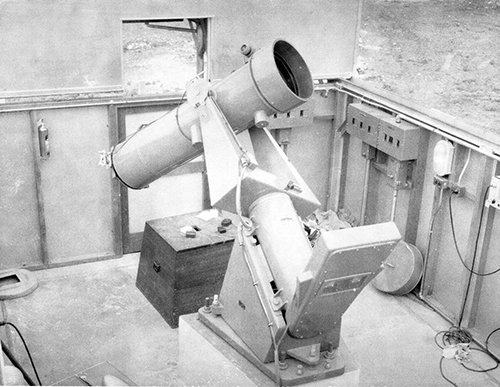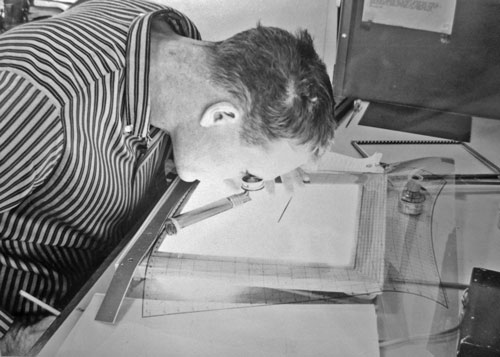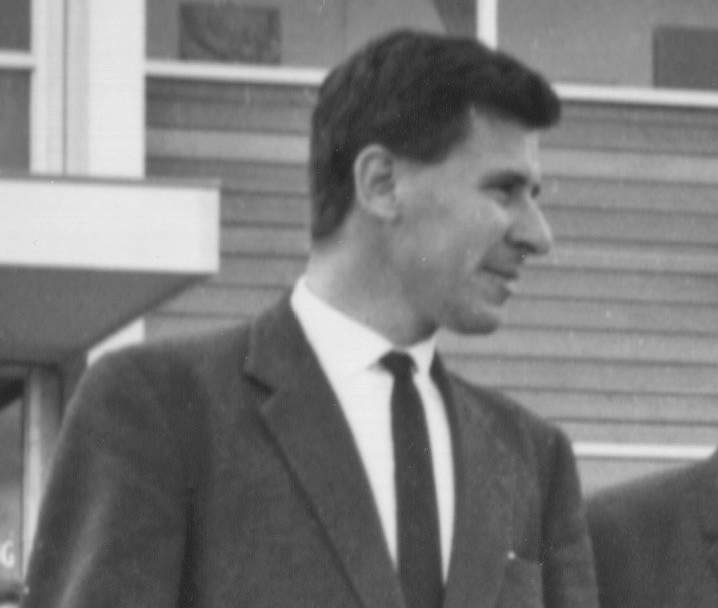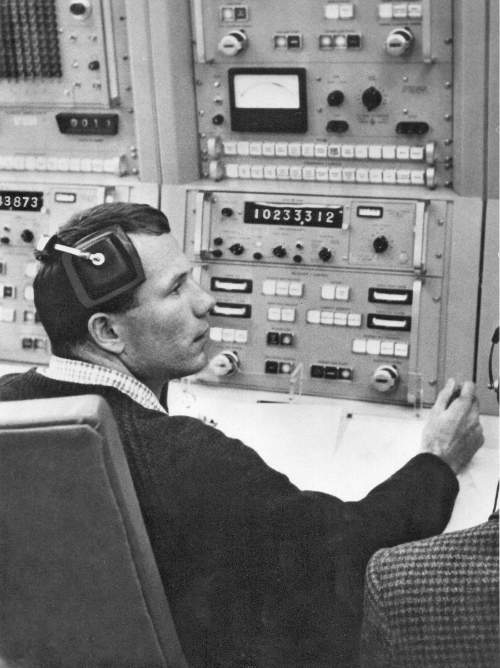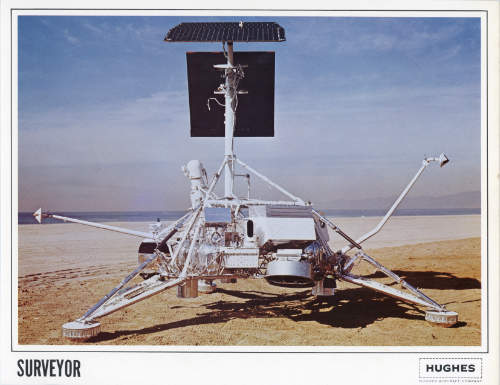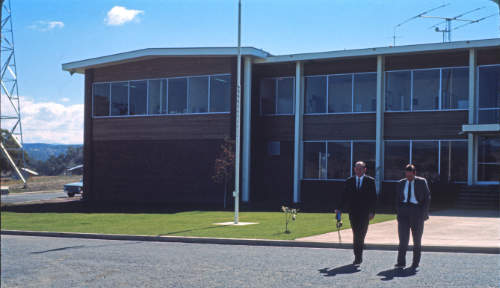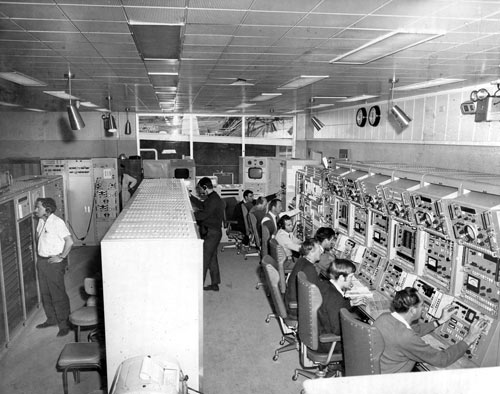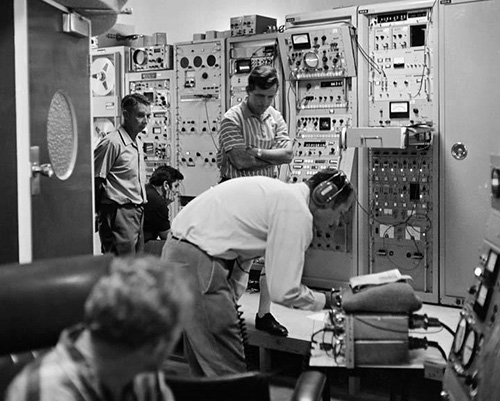Bruce Window
Island Lagoon, Tidbinbilla, Parkes
Bruce Window with his old friend, the Minitrack console (which was later moved to Orroral Valley) at the National Museum of Australia, July 2019. |
Before NASA
Bruce did Primary education in Brisbane and two years of Secondary trade/scientific subjects at the State Industrial High School. In 1955 he got a job as a Cadet in the Radio Branch of the Queensland Police. At that time, the QLD Police Radio Branch were staffed by technically trained Police Officers and Cadets.
In 1957, as an 18-year-old, Bruce did compulsory National Military Service basic training.
In 1958 he had passed the First-Class Commercial Operators technical examination conducted by the PMG Department. He was sworn in as a Police Constable later that year and attached to the Radio Branch. He did shiftwork as an interstate Morse operator, technical maintenance on Police transmitters and car radios, and did relieving duties at Police radio stations in Queensland. He went to night school to obtain University admission and enrolled at QLD University as a part-time student.
In 1962 he applied for a position with Weapons Research Establishment at Woomera and was offered a position as a technician. He resigned from the QLD Police and commenced work at NASA’s Island Lagoon Minitrack Station, Woomera in June 1962.
NASA Period
Island Lagoon
Bruce began work at Minitrack, Island Lagoon supervised by E.G (Ned) Kelly, one of the original 1957 IGY trackers at Woomera. He became proficient in the operation and maintenance of the 136MHz Mod 1 Minitrack System tracking Earth orbiting satellites.
E. G. (Ned) Kelly at the original 108MHz Minitrack at Range G in 1961. Frame from a Department of Supply film. |
Bruce Window at the Island Lagoon 136 MHz Minitrack console in 1963. |
He learned to do optical satellite tracking with the Minitrack Optical Tracking System (MOTS).
1963 photo of the MOTS Telescope and Camera at Island Lagoon is courtesy of Bruce Window. Photographer unknown. |
Bruce Window examines a MOTS (Minitrack Optical Tracking System) photographic plate. Scan: Jan Delgado. |
He assisted Ned Kelly with recalibration of the Minitrack Antenna field using a RAAF Canberra bomber as the radio source. When 24 hour shifts were instituted in 1963, Bruce worked on a shift with WRE contractors, mainly as a Telemetry operator.
On vacation in 1964 he met the CEO of SpaceTrack, John Galbraith in Canberra, to enquire about a job at Tidbinbilla. Because Bruce was employed by WRE he was told that was not possible.
John Galbraith at Tidbinbilla in 1966. |
Upon returning to Woomera, Bruce resigned from WRE and got a technician’s job at Channel 9 in Brisbane. When SpaceTrack advertised for Technicians later that year, Bruce applied, and was offered the job of RF Technician to commence on 4th January 1965.
Tidbinbilla.
Bruce moved to Canberra and worked for SpaceTrack P/L as a Receiver Technician under RF Engineer, Keith Brockelsby.
At this time, SpaceTrack was finalizing DSS42 in preparation for its initial tracking task of Mariner Mars IV. He was a Receiver Operator for the Mariner mission but then moved to DSS42 Station Operations for the first Surveyor Moon-landing mission.
Bruce served as a Receiver Operator for the Mariner IV Mars mission in 1965. |
Early in 1967, he attended a DSN Operations Conference at JPL, and saw Surveyor 3 and 4 being built at the Hughes factory. Back at Tidbinbilla he was an Ops Supervisor to Surveyor 3 through 7 as well as the Pioneer deep-space missions.
A Hughes Aircraft poster showcasing the Surveyor spacecraft. |
When DSS42 was committed to supporting the Apollo Program, Bruce was made one of two initial USB Operations Supervisors for the “Honeysuckle Wing” at Tidbinbilla, called HSKX. When JPL released DSS42 to the MSFN for an Apollo Mission, he was operationally responsible to Honeysuckle Creek for Tidbinbilla’s performance during his shift.
The MSFN Wing at Tidbinbilla has been added to the left of the main Tidbinbilla Operations and Engineering Building. In this 1966 or 1967 photo, Station Director Don Gray at right accompanies an unidentified visitor. |
The MSFN Wing, HSKX, at Tidbinbilla. |
He did MSFN preflight testing, and Apollo Missions 6 through 11, 13, 14, 15 and 17 as USB Supervisor at HSKX. He was assigned to lead operations at Parkes Radio Telescope for SpaceTrack’s support of Apollo 12, and again was there for emergency support of Apollo 13.
Bruce Window in the control room at Parkes, shortly after arriving from Tidbinbilla during the Apollo 13 emergency. He writes, “Dr John Bolton (CSIRO) is at left near the door, Jack Dickinson (Tidbinbilla RF Senior Tech.) is near me and facing me, and Peter Stewart (RF/Comms Technician, Tidbinbilla) is seated at SDDS with head in hand.The CSIRO dish driver [Neil ‘Fox’ Mason] is at left foreground.” Photo © CSIRO / ATNF, used with thanks. |
In September 1970, as the construction of the 64m antenna neared completion, he was sent to JPL for 6 months to interface between Bill Merrick’s Design Engineering Group and Tidbinbilla station management. He returned to Tidbinbilla in March 1971 and had the role of Implementation Coordinator for the electronic systems and cabling to make DSS43 operational. He was employed by AWA in 1971 when SpaceTrack lost the O&M contract for Tidbinbilla. Completion of most System Tests on DSS43 enabled it to support Apollo 17 with Bruce as its USB Supervisor.
The newly completed 64 metre DSS-43 at right, dwarfs the DSS-42, the original Tidbinbilla antenna, at 26 metres. This photo was reproduced in the DSS-43 opening souvenir booklet. Scanned from Bryan Sullivan’s copy. |
When DSS43 became fully operational, Bruce returned to his role as a shift supervisor. He had responsibility for both DSS42 and DSS43 covering planetary and deep space missions as well as radio astronomy. In 1973 AWA lost the O&M contract and his employment as a shift supervisor was continued by Fairey Aviation.
After NASA.
In 1975 he resigned from Fairey Aviation and took a position in Canberra with the Commonwealth Government as a Patent Examiner. In 1982 he transferred to Brisbane and worked for 20 years with Department of Veterans Affairs.
He resigned from the Commonwealth in 1997 and moved within Brisbane to IBM as manager of a desk-top computing service group. He retired two years later.
Retirement.
In the years leading up to retirement, Bruce had been interested in sports cars that could be built at home (Kit Cars). Retirement gave him the time to engage seriously. He joined a Brisbane club which were constructing road-legal Lotus 7 replicas. He built one kit for himself in the first 18 months of retirement, and then later, another for his eldest son, Gavin.
He became interested in an Archaeology project in Jordan run by Sydney University. He spent four seasons with them as a volunteer at Pella, Jordan, between 2003 and 2009.
______
See also this 2010 interview with Bruce – in the Interviews section.
Bruce is a source of many images and comments to this website about Australia’s support of the US Space Program.

